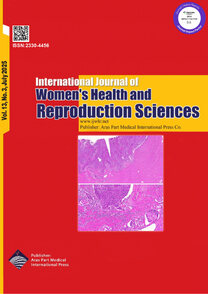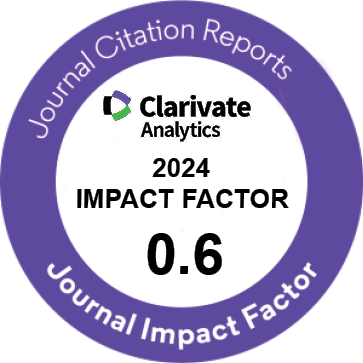| Original Article | |
| Demographic, Anthropometric, and Biochemical Characteristics of Jordanian Women With Polycystic Ovary Syndrome: A Case-Control Study | |
| Jehan Hamadneh1, Nahla S. Al-bayyari2, Shereen Hamadneh3, Safaa Al-Zeidaneen4, Hadil Subih2, Samar Z. Burgan5, Zouhair O. Amarin1 | |
| 1Department of Obstetrics and Gynaecology, Faculty of Medicine, Jordan University of Sciences and Technology, Irbid, Jordan 2Department of Nutrition and Food Technology, Al-Huson University College, Al-Balqa Applied University, Irbid, Jordan 3Department of Maternal and Child Health, Faculty of Nursing, Al-albayt University, Mafraq, Jordan 4Department of Allied Medical Sciences, Faculty of Al-Zarqa University College, Al-Balqa Applied University, Al-Salt, Jordan 5Department of Oral and Maxillofacial Surgery, Oral Medicine and Periodontology, School of Dentistry, the University of Jordan, Amman, Jordan |
|
|
IJWHR 2021; 9: 024-028 DOI: 10.15296/ijwhr.2021.05 Viewed : 2617 times Downloaded : 1925 times. Keywords : Polycystic ovary syndrome, Homocysteine, Androgens, Lipids |
|
| Full Text(PDF) | Related Articles | |
| Abstract | |
Objectives: To compare the demographic, anthropometric, and biochemical characteristics between women with polycystic ovary syndrome (PCOS) and healthy women and to identify the independent biochemical markers of PCOS. Materials and Methods: A case-control study was conducted on 77 women with PCOS and 73 healthy controls aged between 18 and 49 years. Blood samples were obtained for the determination of plasma total homocysteine (tHcy), total cholesterol (TC), triglycerides (TG), low- and high-density lipoprotein, TC/high-density lipoprotein ratio, total testosterone (TT), sex hormone-binding globulin, and free androgen index (FAI). Finally, multivariable logistic regression analysis was performed to identify the independent biochemical markers of PCOS. Results: The mean differences between cases and controls in tHcy, TG, and sex hormone-binding globulin were statistically significant. tHcy and TG were elevated in cases while sex hormone-binding globulin demonstrated a reduction. All three markers were identified as independent predictors of PCOS in multivariable analysis in addition to a fourth, TT. tHcy is an independent biomarker of PCOS despite a relationship with TG and TC, the former of which is itself an independent biomarker. Conclusions: In general, overweight women with PCOS had higher levels of tHcy and TG and a lower level of sex hormone-binding globulin compared with healthy controls. The level of tHcy is a marker of PCOS independent of the lipid profile. The differential biochemical profile of women with PCOS and healthy women provides useful hints for the diagnosis of PCOS and thus must be addressed in relation to the risk of cardiovascular disease. |
Cite By, Google Scholar
Google Scholar
PubMed
Online Submission System
 IJWHR ENDNOTE ® Style
IJWHR ENDNOTE ® Style
 Tutorials
Tutorials
 Publication Charge
Women's Reproductive Health Research Center
About Journal
Publication Charge
Women's Reproductive Health Research Center
About Journal
Aras Part Medical International Press Editor-in-Chief
Arash Khaki
Mertihan Kurdoglu Deputy Editor
Zafer Akan























